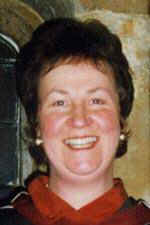
Using Rhythm to Strengthen Wellbeing
by
Penny Sharland

Rhythm is a basic
universal language that everyone understands. It is a natural aspect of the
human experience.
Many of us will
instinctively say that we cannot drum, that we have no rhythm or that we’re
uncoordinated. Watching classical percussionists and band drummers we may feel
that these individuals possess a strange metronome inside their heads that helps
them keep time and prevents boredom setting in. Some of us have experienced the
rigours and agonies of trying to learn complex Latin American rhythms during the
Samba boom in the 1990s. But all of us have rhythm within us, and by putting the
idea aside that it is a skill to be learned and honed over many years in smoke
filled rooms, the drum circle can take us straight to the powerful
effects that rhythm can deliver.
Participating in a drum
circle is a healing experience for the heart, mind and body. In the States
the drum circle is well established as a way of encouraging individuals
to come together in a temporary ‘community’ to make music and promote unity.
People of all ages and abilities participate in a ‘rhythmical expression’
that contributes to their individual feelings of wellness and a group experience
of harmony. No experience is needed; the rhythms evolve naturally. All that is
required is a large array of drums percussion instruments or other objects that
will make a noise. No-one conducts or gives out parts; there is no rehearsal in
a drum circle – it is all part of the experience. Over time the group
– that is - all who are present, become a single entity, inventing music from
apparently nowhere and together gently shaping the direction, tempo and style.
People who are reticent of placing hands on a drum skin for the first time soon
find themselves tapping gently on the instrument in front of them, responding to
the rhythm they are feeling in their physical selves and in their hearts and
souls.
Individuals who know
something of drum facilitation lead the group in a gentle development of our
natural instincts for rhythm. Yet you may be hardly conscious of their
interventions as they unobtrusively guide the group in what it has already
decided it wants to do. Few words are used – the ‘community’ dictates the
direction and flow of the music. For example, facilitators who aim to speed up
the music may find their efforts gently resisted by a group who somehow silently
know that the perfect tempo for them is the one they are already playing. In
Britain many of these drum circle facilitators have been taught by world
leading authority on circles – Arthur Hull from Santa Cruz. He himself learned
at the feet of his mentor Babatunde Olatunji – an eminent African
percussionist in America. Arthur holds workshops throughout USA and annually in
Hawaii and UK. Arthur says:
“When
a group of people who are of common mind and purpose come together and harmonize
with each other through song, music and percussion, they create a synergized
force that solidifies the group vision and purpose. We are dedicated to making
this happen by using drumming as a tool to create unity. ” (Drum Circle
Spirit: White Cliffs Media:
1998)
Drum
circles
are open activities to which all are welcome. Those of us lucky enough to have
been involved in this growing phenomenon understand how apparent strangers, many
of whom will not know each other and will have no experience of drumming or of
playing live, can collectively make the most amazing music. Every circle is
different, because each group identity is unique and the circumstances also
vary. Women’s circles tend to have a different feel to them, as women together
tend to listen more than play, often finding pieces that naturally end in a
period of silence or evolve with only one or two women playing. Young people
love the liveliness of circles because they do not have to compete, but find
great fun and personal satisfaction in sharing the space and yet achieving a lot
in the sounds they magic from nowhere. Many people with both learning and
physical disabilities join circles, and source a place within themselves that
bypasses language, attention and ultimately discrimination. For spiritual
practitioners circles can bring the spiritual more in tune with their physical
and emotional worlds, and for some they feel closer to the Earth, to the Source,
to God.
Drumming
provides an opportunity to step out of the technological world and into another,
more connected with ancient resonances, where people feel a part of an
extraordinary experience – sharing and creating the rhythms that emanate from
our temporary ‘community’. Practitioners often say that the goodwill and
connectedness generated in a drum circle affects the locale in positive
ways that resonate for days afterwards. For others there is a cleansing and
healing influence on the venue and individuals that continues into other
activities. Babatunde Olatunji says
‘All
people from all walks of life, all colors, have various things they can do
together to create harmony, and it is the simplest thing to make music and sing
together.’
Circles
can take place anywhere – festivals and community events, the workplace or
within extended family groups.
![]()
For more information go to www.drumcircle.com
Biodata:
Penny
Sharland works with Framework which she describes as an independent sector organisation delivering training
and consultancy to the not-for-profit sector.
Website:
www.framework.org.uk.
Penny may be contacted direct at penny@framework.org.uk.
Phone: 01706 648067.